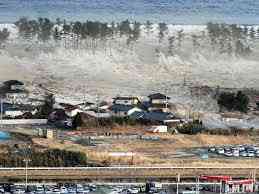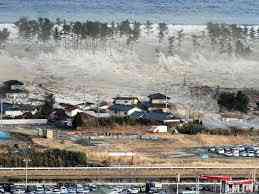Tsunamis are large waves of water caused by disturbances on the seafloor, such as earthquakes. This disturbance forms waves that spread in all directions with wave speeds reaching 600--900 km/hour.
Initially, this process was triggered by the vertical movement of plates that form faults. The fault then causes the seafloor to rise which is called an earthquake. This is where the water balance is disturbed, which in turn causes tsunami waves that move towards the coast. These waves have a small amplitude (generally 30--60 cm) so they are not felt on the open sea, but increase in amplitude as they approach the coast. It is on reaching these coasts that tsunamis sometimes strike land in the form of giant walls of water (especially in large tsunamis), but the more common form is a sudden rise in the water level.
The rise in the water level alone can reach 15 to 30 meters, causing flooding with current speeds of up to 90 km/hour, reaching several kilometers from the coast, and causing considerable damage and loss of life.
Baca konten-konten menarik Kompasiana langsung dari smartphone kamu. Follow channel WhatsApp Kompasiana sekarang di sini: https://whatsapp.com/channel/0029VaYjYaL4Spk7WflFYJ2H







